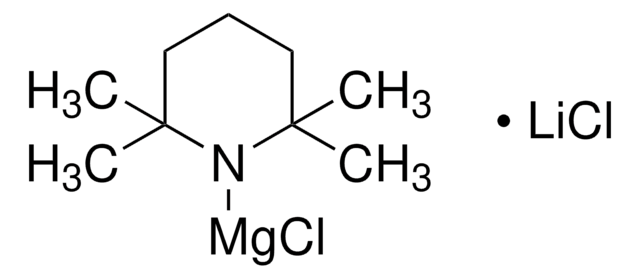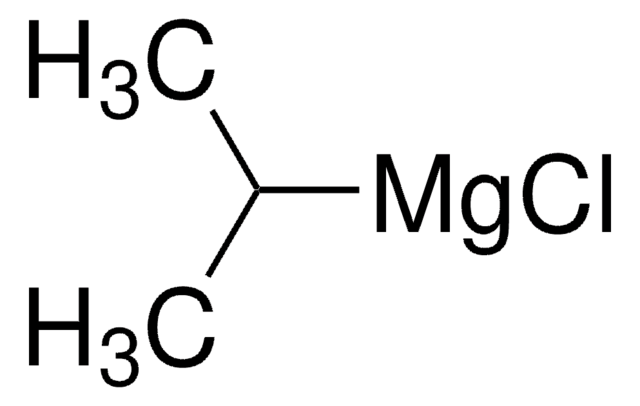Wichtige Dokumente
703516
Zinkchlorid -Lösung
1.9 M in 2-methyltetrahydrofuran
Synonym(e):
Chlorzink
About This Item
Empfohlene Produkte
Form
liquid
Qualitätsniveau
Eignung der Reaktion
reagent type: catalyst
core: zinc
Grünere Alternativprodukt-Eigenschaften
Catalysis
Learn more about the Principles of Green Chemistry.
sustainability
Greener Alternative Product
Konzentration
1.9 M in 2-methyltetrahydrofuran
25 % (w/w)
Dichte
1.07 g/mL at 25 °C
Grünere Alternativprodukt-Kategorie
, Aligned
SMILES String
Cl[Zn]Cl
InChI
1S/2ClH.Zn/h2*1H;/q;;+2/p-2
InChIKey
JIAARYAFYJHUJI-UHFFFAOYSA-L
Suchen Sie nach ähnlichen Produkten? Aufrufen Leitfaden zum Produktvergleich
Allgemeine Beschreibung
Anwendung
2-Methyltetrahydrofuran (2-MeTHF): Ein aus Biomasse gewonnenes Lösungsmittel mit weitem Anwendungsbereich in der organischen Chemie
Signalwort
Danger
H-Sätze
Gefahreneinstufungen
Acute Tox. 4 Oral - Aquatic Acute 1 - Aquatic Chronic 1 - Eye Dam. 1 - Flam. Liq. 2 - Skin Corr. 1B - STOT SE 3
Zielorgane
Respiratory system
Zusätzliche Gefahrenhinweise
Lagerklassenschlüssel
3 - Flammable liquids
WGK
WGK 3
Flammpunkt (°F)
10.4 °F - closed cup - Solvent
Flammpunkt (°C)
-12 °C - closed cup - Solvent
Persönliche Schutzausrüstung
Faceshields, Gloves, Goggles, type ABEK (EN14387) respirator filter
Hier finden Sie alle aktuellen Versionen:
Besitzen Sie dieses Produkt bereits?
In der Dokumentenbibliothek finden Sie die Dokumentation zu den Produkten, die Sie kürzlich erworben haben.
Kunden haben sich ebenfalls angesehen
Artikel
Colloidal quantum dots (CQDs) are semiconducting crystals of only a few nanometers (ca. 2–12 nm) coated with ligand/surfactant molecules to help prevent agglomeration.
Unser Team von Wissenschaftlern verfügt über Erfahrung in allen Forschungsbereichen einschließlich Life Science, Materialwissenschaften, chemischer Synthese, Chromatographie, Analytik und vielen mehr..
Setzen Sie sich mit dem technischen Dienst in Verbindung.








